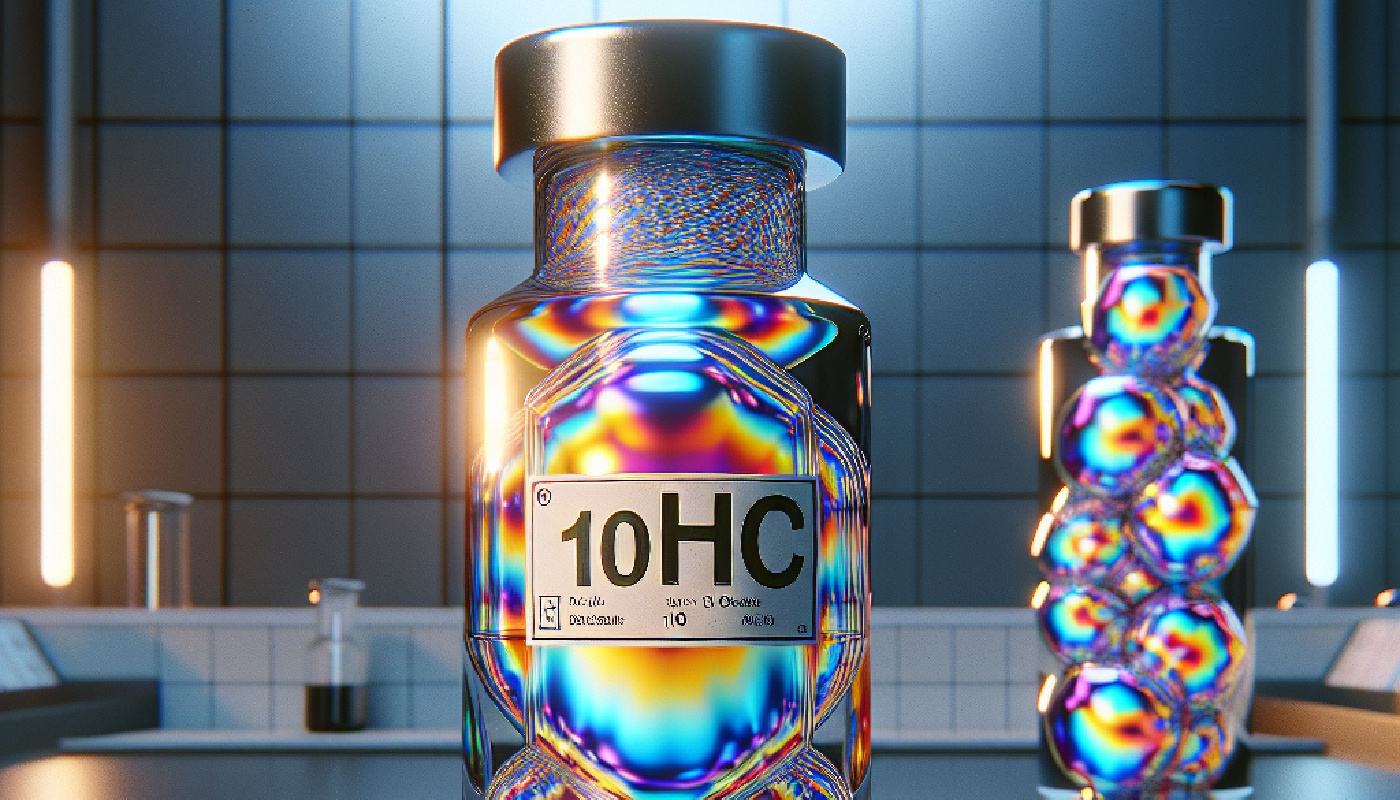In the world of cannabinoids there is a constant development of new varieties that surprise consumers and regulators alike. One such new product is 10-OH-HHC, the successor to the already well-known HHC (hexahydrocannabinol). While CBD and other hemp products are subject to strict regulations and the HHC ban finally came into force in Germany on 27 July, the disaster of products falsely declared as natural products continues. It is time to take another critical look at the dangers of HHC & Co. and the inadequate legal provisions for synthetic substances.
WHAT IS 10-OH-HHC?
10-OH-HHC, also known as 10-hydroxy-hexahydrocannabinol, or 10HC for short, is a derivative of hexahydrocannabinol (HHC). HHC is a semi-synthetic cannabinoid produced by the hydrogenation of delta-9-THC. 10-OH-HHC is synthesised by introducing a hydroxy group (-OH) to the 10th carbon atom of the HHC molecule. Like many synthetic cannabinoids, 10-OH-HHC can pose serious health risks, including unwanted side effects such as anxiety, paranoia and cardiovascular problems. The legal status of such substances varies by country and can change rapidly as regulators respond to new developments.
DANGERS OF 10-OH-HHC
1. Unknown long-term effects:
Because 10-OH-HHC is a relatively new product on the market, there are few studies on its long-term health effects. The lack of research means that consumers are exposed to potential health risks without realising it.
2. Side effects:
As with many synthetic cannabinoids, unwanted side effects can occur with 10HC. These include anxiety, paranoia, increased heart rate and blood pressure problems. These effects can occur especially at higher doses or in sensitive individuals.
3. Potential for abuse and dependence:
Due to its potentially stronger psychoactive effects compared to natural cannabinoids, there is a potential for abuse and dependence with 10-OH-HHC, which is of particular concern as the availability and use of such substances increases.
LACK OF REGULATION – A DOUBLE-EDGED SWORD
10-OH-HHC, like its predecessor(s), is not subject to any quality control criteria or purity regulations. CBD, as a non-psychoactive cannabinoid with proven health benefits, is subject to strict regulations and quality controls. Manufacturers must undergo extensive testing and certification before they are allowed to market their products. These strict regulations are designed to ensure that CBD products are safe and free from harmful impurities. And that’s a good thing!
But in contrast, products such as 10HC, which have potentially more dangerous and less researched effects, can often be sold without the same stringent control. These inadequate regulations not only lead to consumers buying products whose safety and quality are not guaranteed, but also create unfair competition.
COLOURED EDIBLES AND VAPES
The sale of 10HC in the form of colourful, flavoured vapes, which are particularly attractive to younger consumers, is especially problematic. The products are easily accessible and often attractively packaged, which increases the risks of abuse and accidental ingestion. It is simply time for legislators to move more quickly to enforce bans on the ever-popping variants and for this issue to be critically scrutinised to highlight the dangers in order to contribute to a better and safer future for all who wish to reap the benefits of the hemp plant. All without access to synthetic cannabinoids, which are blandly advertised to consumers as purely herbal.
So anyone who is still talking about the “HHC hype” is advised to take a deep breath and, out of respect for health, perhaps think again about whether highly risky products that are not subject to any purity requirements actually deserve any kind of attention… `cause deep down inside we all know it’s a “NO”.
